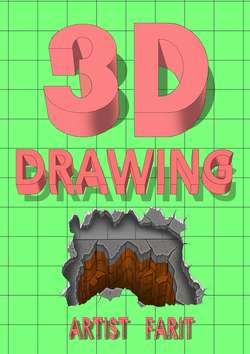Читать книгу 3D drawing. Tutorial 3D drawing - Artist Farit - Страница 8
Errors in 3D drawing
Next example
ОглавлениеA large cube made of small cubes. In terms of painting, the cube is drawn wonderfully. From a perspective point of view, the cube is drawn with small errors.
The cube is drawn on a rectangular paving slab. Continuing the seams of the tiles, we find the horizon line of this site. Tile seams intersect at the site’s skyline.
Continuing the horizontal sides of the cube, we find the horizon of the original photo (or sketch) of the cube. The horizon of the site and the horizon of the photograph, or the sketch on which the drawing was drawn, do not match. The discrepancy of the horizon lines is insignificant, but noticeable.
The discrepancy between the horizon line of the site and the horizon of the drawn object is not the only way to prove that the cube is drawn with slight violations of the laws of perspective.
In this photograph there is further evidence that the drawing is drawn from a photograph, or from a sketch. But not a way to build a projection.
Look at the right angle of the paving slabs and the “right angle” of the bottom face of the cube. Agree that all the corners of the bottom face of the cube should be straight (90 degrees). Unless, of course, a cube is drawn in this figure, and not a prism with a base in the form of a rhombus or parallelogram. The closest to us (and any) corner of the base of the cube should be straight. What do we see in the picture (and in the picture of the picture)? The pavement tile is rectangular, of which I have no doubt. It turns out that for the drawn cube, the angle closest to us is not a straight line, not 90 degrees. It can be assumed that the near corner does not lie on the surface, but hangs above the surface. In this case, under the cube, there should be a shadow. There is no shadow in the figure, which means that a cube is drawn that lies on the surface with its entire base.
Why do you get such errors?
First reason.
The cube is photographed (or drawn) at an angle slightly different from the viewing angle of the picture.
Second reason.
The photograph of the cube was also taken from a different distance that does not coincide with the distance from the drawing to the viewer. Or the sketch was drawn “by eye” without taking into account the laws of perspective.
The following figure shows three options for the relationship, the distance from which the 3D drawing of the cube was photographed, and the distance from the camera to the cube in the preliminary photograph or sketch.
